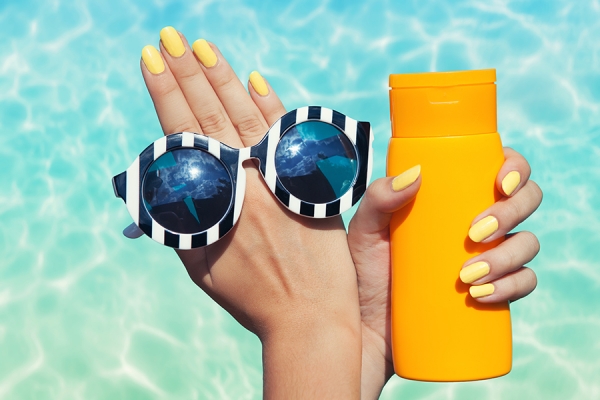Educating Clients on Sunscreen, SPF,

Summer is well on its way and that means many people will head out for a little fun in the sun, which can be a wonderful way to get a healthy dose of vitamin D when managed in small amounts. A recommended 15 minutes per day of direct sunlight is what many medical experts claim to be the magic number for proper absorption. The confusion comes for many consumers in that, if a little sun is healthy, then why wouldn’t more be even better? Well, the truth of the matter is that too much of a good thing can sometimes be bad – especially when we are speaking specifically about prolonged sun exposure, which can be extremely harmful to skin tissue, causing premature aging and even skin cancer. In 1736, Benjamin Franklin famously stated that “an ounce of prevention is worth a pound of cure.” Back then, he was speaking to Philadelphians about fire safety, however, his words could be applied here today in the context of how a high-quality sunscreen could protect the skin from damaging heat and burning rays coming directly from the sun.
RISK OR NO RISK
According to scientific studies reviewed by the FDA, using a broad-spectrum SPF 15 or higher was shown to reduce the risk of skin cancers, sun burns, and premature skin aging when used in conjunction with other measures, such as limiting sun exposure time, avoiding sun during the highest risk times of 10 A.M. and 2 P.M., and using sun protective clothing such as hats or sunglasses. Our skin does have some natural ability to resist the sun, but it needs more help for prolonged exposure time and this is where a good sunscreen steps up and adds extra layers of protection to prohibit skin cell damage from ultraviolet radiation (UVA often referred to as aging rays and UVB sometimes called burning rays). According to skincancer.org, an SPF 30 allows about three percent of UVB rays through to skin, whereas an SPF of 50 only allows about two percent of those same rays through, which seems like a miniscule difference until it is understood that the SPF 30 allows about 50 percent more radiation absorption into skin. It is clear that a broad-spectrum sunscreen is necessary, but which type is best: a chemical sunscreen or a physical sunscreen?
Chemical sunscreen absorbs quickly into the skin to do its job of absorbing ultraviolet rays, converting them into heat and then releasing them from the body. This is useful for sports and swimming, where sweat and water-resistant formulas might be best as they are required to last for at least 40 minutes of water and sweat exposure. It is important to note that the general recommendation is to reapply chemical sunscreen every two hours or after any exposure to water. The other version of sunscreen is known as a physical sunscreen and is often a bit heavier, offering a reflective property to prevent ultraviolet rays from penetrating the skin. For more sensitive skin types, the latter tends to be a better fit because it is less irritating and more moisturizing. Gone are the days when a physical sunscreen showed up as a thick white film on the lifeguard’s nose. Today’s newer blends offer tinted versions with matte properties and even skin smoothing components. Skin protection never looked so good.